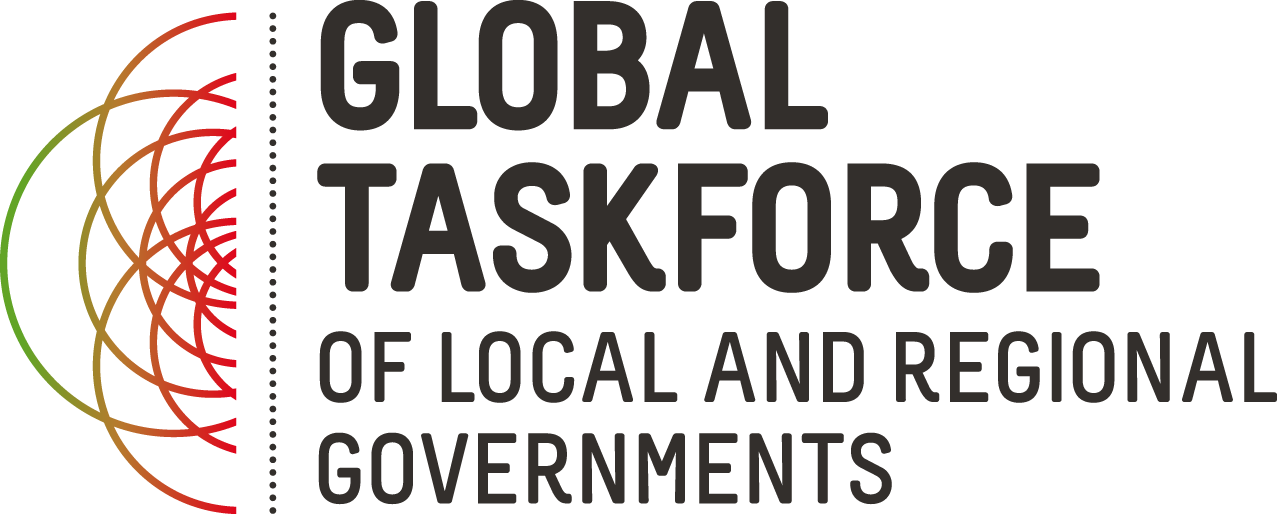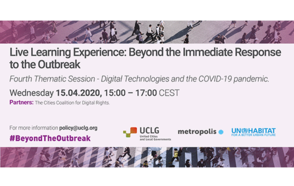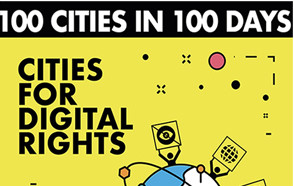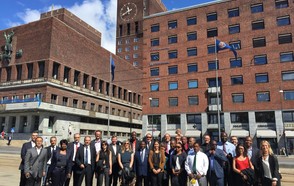
As UN Secretary-General António Guterres said recently, the post-COVID19 world will be more digital than before. He views human rights as key to shaping the pandemic response, in terms of the public health emergency and the broader impact on people’s lives and livelihoods. Human rights put people at the center of this crisis. Therefore, while acknowledging the important, instrumental role that digital technologies can play in containing and resolving the current crisis, their application should significantly consider digital rights.
We, the Cities Coalition for Digital Rights, with membership of over 50 cities worldwide, have made a commitment towards humane technology, which means considering technologies at the service of people and the public good. Based on our five digital rights principles, we make the following statement regarding digital rights with relation to COVID-19 related digital technologies, such as contact-tracing applications, video conferencing and learning platforms, geographic mapping, and the use of surveillance tools:
1. Digital tools that are applied to solve the pandemic crisis and to help transition to normalcy should not be seen as stand-alone solutions, but rather as supplements to a comprehensive approach that includes traditional testing, social distancing, manual contact tracing, and clinical research. We believe that if authorities decide to use such technologies; e.g. contact-tracing apps, their use should not put the fundamental rights of people at undue risk, and should be accompanied by the implementation of the corresponding epidemiological control measures by the health authorities (availability of protective equipment, tests for detection, manual contact tracing, etc.), and the establishment of new guidelines for social behavior.
2. While considering the possible role of digital technologies in the transition from pandemic phases of containment, mitigation, and rebuilding, including apps, we emphasize the need to respect the rights of citizens, including anonymity, transparency and control regarding both the medium used and the data collected. The evaluation metrics for the effectiveness of these tools should be clearly determined upfront, and the tools should be monitored once deployed. If their supposed benefit ceases to exceed the cost or risk, they should be removed.
3. Those mandated to deploy technologies for crisis response should avoid fueling asymmetries and inequality. Digital technologies can have asymmetrical impacts, where some groups experience benefits and others, often vulnerable and marginalized groups, are negatively impacted. Local and regional governments are the first responders to the COVID-19 crisis and play an essential role in guaranteeing rights protection via local public service provisions, including the most vulnerable populations. Private companies providing technology platforms; e.g. smartphone operating systems should not take any economic advantage of users when developing apps for this pandemic purpose.
4. Civil society must be prominently involved in the specification, design, development, and testing of these technologies, with more transparency and openness, including pre- and post-assessment of these technologies. Collaboration with civil society and interaction with local communities will support democratic, inclusive, and transparent implementation of these technologies, reinforcing democratic control, social cohesion, and leveraging our local societies’ knowledge and experience.
5. Our cities should work together to set societal norms relating to COVID-19 technologies, with a holistic government approach and through public debate with residents and stakeholders. Now more than ever, it is important to consider the way that technologies, as co-evolving with our social structures, impact society. We must do so bearing in mind the legacy of these decisions, because setting these norms will have long-lasting effects into the future.
6. Human rights and public health responses go hand-in-hand. A rights-based approach to the design and use of technology to respond to COVID-19 is fundamental to the success of public health response. We believe that if these solutions are implemented, it is essential that the entity that authorizes the use of digital technology solutions, should be the closest possible health authority to citizens.
Digital technologies, when leveraged in response to the pandemic crisis should follow the Coalition’s core principles, which have been integrated with the 10 following principles for this purpose:
1. Principle of Nexus and Proportionality. Purpose limitations must be in place. Neither the technologies nor the data collected may be used for purposes other than those deemed strictly necessary for crisis response.
2. Principle of Impermanence. Use of these technologies and data must be limited in time. Once the risk of the pandemic has decreased to insignificant levels, they must no longer be used and all personal data should be deleted. There should be both technical and legal sunset clauses in place.
3. Principle of Consent and Trust. Use of technologies should be voluntary and adhere to notice and consent. They cannot be imposed under any kind of coercion or reward system. Only then can a mutual trust arise.
4. Principle of Privacy by Design. The technologies must respect the privacy of users and of all related persons; e.g. contacts. Privacy should be evaluated in the context of the real risks of re-identification or other privacy loss, especially when using highly sensitive information such as healthcare data.
5. Principle of Control. Citizens must be considered the primary owners of data they generate through the use of applications and services, where possible. Where applicable, technologies should empower citizens to be stewards of their own data.
6. Principle of Openness and Transparency. Technologies must be developed using open technologies, data models, formats and code, so that the code can be audited, verified and adopted by other cities and organizations, fostering transparency.
7. Principle of Responsiveness. Technologies for COVID-19 should not be stand-alone measures but should draw upon the existing expertise, needs, and requirements of public health authorities and society, culture, and behavior, if they are to be effective in combatting the pandemic.
8. Principle of Participation. The development of such technologies should consider the needs of all people and include strong feedback loops between policy makers and citizens, with opportunities for iteration. Human rights should be explicitly taken into account in the selection of solution providers and in the process of technical development.
9. Principle of Social Innovation. The successful and equitable use of these technologies requires a focus on social innovation, rather than on technological innovation when they are to be used in everyday life in our societies. Collective social intelligence, behavior, and social cohesion are equally important.
10. Principle of Fairness and Inclusion. Technologies must be accessible and serve all communities, assuring equal accessibility and equal treatment across communities. Technologies should be used to eliminate social inequalities, while paying particular attention to marginalized groups.
You can download a pdf version of the principles here.
- Visit the official website of the Cities Coalition for Digital Rights,













